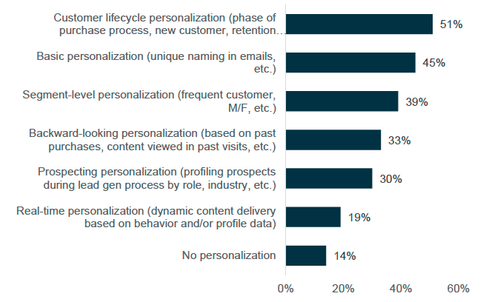10:50 AM
The Digital Trends for Data-Driven Markets in 2015 & Beyond
Digital channels represent 25% of today's total marketing budgets, and with the adoption of smartphones, digital commerce, and growth of social networks, digital marketing spend is expected to grow to one third by 2017, says Michael Lummus, director of digital marketing solutions at Teradata.
Big data will represent $50 billion in spending in the US alone, with a lot of the use cases driven by marketing and digital. Teradata's international survey of 400 enterprise digital marketers found an upward trend in digital marketing budgets, and a slight decrease in more traditional offline channels.
The rise of digital channels comes with its own challenges as they can be difficult to integrate with existing systems. Integration is essential to communicating across departments, and focusing the business in support of strategy, be it customer centricity or operational alpha.
Shift in Priorities
Teradata's survey revealed the full integration of new tools with existing systems remains the top priority when evaluating new technology, for the first time squeaking ahead of privacy and data security.
Although "easy to use by marketers without IT involvement" ranks fourth in key criteria, it deserves more consideration, suggests Teradata in the report. "When marketers have the ability to manage some or all of their key digital technologies without having to rely on IT/technical resources the effects are profound, on timing, creative capability and accountability."
[Read further arguments for favoring integrated technologies in an interview with Teradata's Sean O'Dowd: The Sentient Enterprise: Data Driven as a Strategy, Not a Tactic]
After winning the budget away from traditional channels like print and television, digital marketers now have to make it count. In a presentation to marketers at Teradata's Partners conference, Lummus shared some of the ways data and technology are being integrated to drive competitive advantages, and where he expects to see the most change in the coming years:
1) Reinventing the customer experience
In a world of increasing choice, algorithms curate and drive a unique experience focused on convenience for customers. Built in feedback loops, ease of access and user experience are at the heart of strategy. "Marketers need to be thinking about how to innovate better experiences for consumers, that are data driven, that have communication at the core. That's what drives the underlying business."
2) Mobile for real-time contextual marketing requirements
Mobile is quickly becoming the primary mechanism consumers are using to consume media, says Lummus. Time spent monthly has increased to 10 hours/individual -- that's taking away from TV, magazine, etc. Because mobile is being used in conjunction with other devices, you need to connect behaviors and interactions across channels. If not, says Lummus, you're missing out on the context in which the consumer is engaging with you. "Don't leave historical and preference data for segmentation with customers behind. Learn what they are trying to achieve at that point in time," then make it easier to complete that action with customized content and coordination.
According to the survey, over 80% of marketers are doing some sort of personalization, but only 19% are doing it in real time. "Most are missing out on context," he adds. "There's a lot of room for growth. We see this as a big trend moving forward." According to the survey, 34% of marketing leaders expect significant increase in budgeting for mobile marketing.
3) Social begins to integrate within the enterprise
Companies have largely adopted social applications on an add-on basis, for particular business needs for a particular department. Realizing the 15-plus social tools within the company aren't communicating there has been a growing movement to consolidate. Furthermore, companies are trying to harness social CRM, and connect social data to the customer base, and to connect social experience to other experiences in order to give a consistent and relevant experience across channels.
4) Customer data drives improvements in digital advertising
Marketers are increasingly aware an inconstancies between their own marketing channels (emails, websites) and paid channels (display, mobile and social advertising), and they are grappling on how to bring this all together. "Marketers are realizing that they need a more holistic approach to interaction management," says Lummus. Using customer data and integrated approaches to individuals drives much better results. Ad campaigns driven by customer data have high click through rates and nearly 500% return on ad spend. Today, most customer data warehouses are focused on collecting information for things like ad targeting and attribution analysis.
5) Digital data enters enterprise analytic architectures
In reality, digital data integration has been focused on subject areas and anonymous user profiles, says Lummus. Combining digital and traditional channels for omni-channel marketing analytics aids in customer identity management. This includes cross-device, data onboarding, and anonymous to known conversion.
























